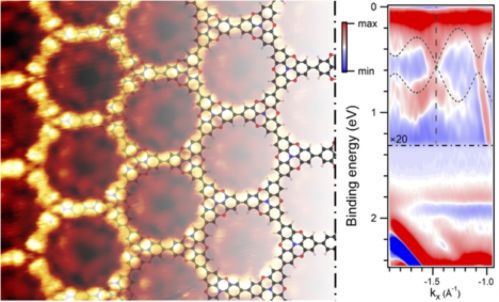At about 7:15 am PT this morning , May 13, 2021, I saw Dr. Mona Nemer’s (Canada’s Chief Science Advisor) tweet (Note: I’m sorry the formatting isn’t better,
Maryse de la Giroday@frogheart Does this mean Canada will support a waiver on patent rights for COVID-19 vaccines?
Dr. Mona Nemer@ChiefSciCanThe global health crisis of the past year has underscored the critical importance of openly sharing scientific information. We are one step closer to making #openscience a reality around the world. So pleased that my office was part of these discussions. http://webcast.unesco.org/events/2021-05-OS-IGM/ Quote Tweet
Canada at UNESCO@Canada2UNESCO · May 6@Canada2UNESCO is partaking in negotiations today on the draft recommendation on #OpenScience The benefits of #science and #technology to health, the #economy and #development should be available to all.6:40 AM · May 13, 2021·Twitter Web App
No reply. No surprise
Brief summary of Canada’s COVID-19 patent rights nonwaiver
You’ll find more about the UNESCO meeting on open science in last week’s May 7, 2021 posting (Listen in on a UNESCO (United Nations Educational, Scientific and Cultural Organization) meeting [about Open Science]).
At the time, I noted a disparity in Canada’s policies centering on open science and patents; scroll down to the “Comments on open science and intellectual property in Canada” subsection for a more nuanced analysis. For those who don’t have the patience and/or the time, it boils down to this:
- Canada is happily participating in a UNESCO meeting on open science,
- the 2021 Canadian federal budget just dedicated a big chunk of money to augmenting Canada’s national patent strategy, and
- Canada is “willing to discuss” a waiver at the World Trade Organization (WTO) meetings.
I predicted UNESCO would see our representative’s enthusiastic participation while our representative at the WTO meeting would dance around the topic without committing. to anything. Sadly, it’s starting to look like I was right.
Leigh Beadon in a May 12, 2021 posting on Techdirt reveals the situation is worse than I thought (Note: Links have been removed),
Few things illustrate the broken state of our global intellectual property system better than the fact that, well over a year into this devastating pandemic and in the face of a strong IP waiver push by some of the hardest hit countries, patents are still holding back the production of life-saving vaccines. And of all the countries opposing a waiver at the WTO (or withholding support for it, which is functionally the same thing), Canada might be the most frustrating [emphasis mine].
Canada is the biggest hoarder [emphasis mine] of vaccine pre-orders, having secured enough to vaccinate the population five times over. Despite this, it has constantly run into supply problems and lagged behind comparable countries when it comes to administering the vaccines on a per capita basis. In response to criticism of its hoarding, the government continues to focus on its plans to donate all surplus doses to the COVAX vaccine sharing program — but these promises were somewhat more convincing before Canada became the only G7 country to withdraw doses from COVAX. Despite all this, and despite pressure from experts who explain how vaccine hoarding will prolong the pandemic for everyone, the country has continually refused to voice its support for a TRIPS patent waiver at the WTO.
…
Momentum for changing Canada’s position on a COVID-19 vaccine patent right waivers?
Maclean’s magazine has a May 10, 2021 open letter to Prime Minister Justin Trudeau,
Dear Prime Minister Trudeau,
…
The only way to combat this pandemic successfully is through a massive global vaccination campaign on a scale and timeline never before undertaken. This requires the production of effective tools and technologies to fight COVID-19 at scale and coordinated global distribution efforts.
The Trade-Related Aspect of Intellectual Property Rights (TRIPS) agreement at the World Trade Organization (WTO) is leading to the opposite outcome. Vaccine production is hindered by granting pharmaceutical companies monopoly power through protection of intellectual property rights, industrial designs and trade secrets. Pharmaceutical companies’ refusal to engage in health technology knowledge transfer makes large-scale, global vaccine production in (and for) low- and middle-income countries all but impossible. The current distribution of vaccines globally speaks to these obstacles.
Hundreds of civil society groups, the World Health Organization (WHO), and the elected governments of over 100 countries, including India, Afghanistan, Bangladesh, Nepal, Pakistan and Sri Lanka have come together and stated that current intellectual property protections reduce the availability of vaccines for protecting their people. On May 5, 2021 the United States also announced its intention to support a temporary waiver for vaccines at the WTO.
We are writing to ask our Canadian government to demonstrate its commitment to an equitable global pandemic response by supporting a temporary waiver of the TRIPS agreement. But clearly that is a necessary but not a sufficient first step. We recognize that scaling up vaccine production requires more than just a waiver of intellectual property rights, so we further request that our government support the WHO’s COVID-19 Technology Access Pool (C-TAP) to facilitate knowledge sharing and work with the WTO to address the supply chain and export constraints currently impeding vaccine production. Finally, because vaccines must be rolled out as part of an integrated strategy to end the acute phase of the epidemic, we request that Canada support the full scope of the TRIPS waiver, which extends to all essential COVID-19 products and technologies, including vaccines, diagnostics and therapeutics.
The status quo is clearly not working fast enough to end the acute phase of the pandemic globally. This waiver respects global intellectual property frameworks and takes advantage of existing provisions for exceptions during emergencies, as enshrined in the TRIPS agreement. Empowering countries to take measures to protect their own people is fundamental to bringing this pandemic to an end.
…
Anand Giridharadas (author of the 2018 book, Winners Take All: The Elite Charade of Changing the World) also makes the case for a patent rights waiver in his May 11, 2021 posting on The Ink, Note: A link has been removed,
…
Patents are temporary monopolies granted to inventors, to reward invention and thus encourage more of it. But what happens when you invent a drug that people around the world require to stay alive? What happens when, furthermore, that drug was built in part on technology the public paid for? Are there limits to intellectual property?
For years, activists have pressured the United States government to break or suspend patents in particular cases, as with HIV/Aids. They have had little luck. Indeed, the United States has often fought developing countries when they try to break patents to do right by their citizens, choosing American drug companies over dying people.
So it was a dramatic swerve when, last week, the Biden administration announced that it supported a waiver of the patents for Covid vaccines.
Not long afterward, I reached out to several leading activists for vaccine access to understand the significance of the announcement and where we go from here.
…
in all this talk about patents and social justice and, whether it’s directly referenced or not, money, the only numbers of I’ve seen,until recently, have been numbers of doses and aggregate costs.
How much does a single vaccine dose cost?
A Sunday, April 11, 2021 article by Krassen Nikolov for EURACTIV provides an answer about the cost in one region, the European Union,
“Pfizer cost €12, then €15.50. The Commission now signs contracts for €19,50”, Bulgarian Prime Minister Boyko Borissov revealed on Sunday [April 11, 2021].
The European Commission is in talks with Pfizer for the supply of COVID-19 vaccines in 2022 and 2023. Borissov said the contracts provide for €19.50 per dose.
…
Under an agreement with the vaccine producing companies, the European Commission has so far refused to reveal the price of vaccines. However, last December Belgian Secretary of State Eva De Bleeker shared on Twitter the vaccine prices negotiated by the Commission, as well as the number of doses purchased by her government. Then, it became known that the AstraZeneca jab costs €1.78 compared to €12 for Pfizer-BioNTech.
…
€12 to €19,50, that’s an increase of over 50%. I wonder how Pfizer is justifying such a hefty increase?
According to a March 16, 2021 article by Swikar Oli for the National Post (a Canadian newspaper), these prices are a cheap pandemic special prices,
A top Pfizer executive told shareholders the company is looking at a “significant opportunity” to raise the price of its Pfizer-BioNTech COVID-19 vaccine.
While addressing investors at the virtual Barclays Global Healthcare Conference last week, Pfizer CFO Frank D’Amelio noted they could raise prices when the virus becomes endemic, meaning it’s regularly found in clusters around the globe, according to a transcript of the conference posted on Pfizer’s website.
Current vaccine pricing models are pandemic-related, D’Amelio explained. After the pandemic is defeated and “normal market conditions” arrive, he noted the window would open for a “significant opportunity…from a pricing perspective.”
…
“So the one price that we published is the price with the U.S. of $19.50 per dose. Obviously, that’s not a normal price like we typically get for a vaccine, $150, $175 [emphasis mine] per dose,” he said, “So pandemic pricing.”
If I remember it rightly, as you increase production, you lower costs per unit. In other words, it’s cheaper to produce one dozen than one, which is why your bakery charges you less money per bun or cake if you purchase by the dozen.
During this pandemic, Pfizer has been producing huge amounts of vaccine, which they would not expect to do should the disease become endemic. As Pfizer has increased production, I would think the price should be dropping but according to the Bulgarian prime minister, it’s not.
They don’t seem to be changing the vaccine as new variants arrive. So, raising the prices doesn’t seem to be linked to research issues and as for the new production facilities, surely those didn’t cost billions.
Canada and COVID-19 money
Talking about money, Canada has a COVDI-19 billionaire according to a December 23, 2020 article (Meet The 50 Doctors, Scientists And Healthcare Entrepreneurs Who Became Pandemic Billionaires In 2020) by Giacomo Tognini for Forbes.
I have a bit more about Carl Hansen (COVID-19 billionaire) and his company, AbCellera, in my December 30, 2020 posting.
I wonder how much the Canadian life sciences community has to do with Canada’s hesitancy over a COVID-19 vaccine patent rights waiver.

